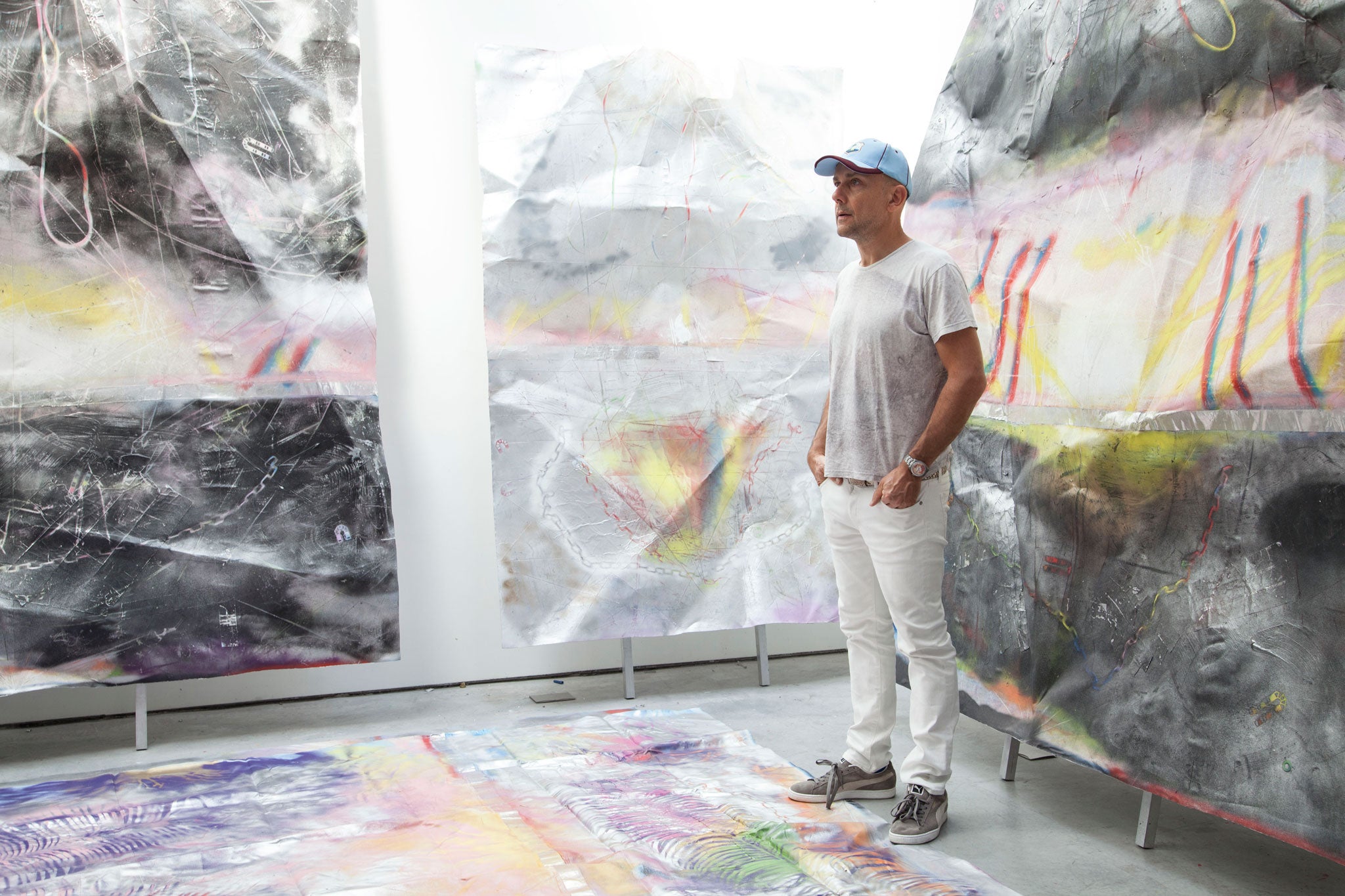Marc Quinn, artist: 'When I don't enjoy coming to the studio anymore, I won't come in'
Karen Wright meets the artist in his studio in London's Clerkenwell

That you are in a successful artist's studio is in no doubt when you enter Marc Quinn's building in Clerkenwell, London. From the industrious quiet bodies behind on massive computers to the scattered artworks, this studio screams professionalism.
Quinn has been here for about 10 years. He has eight full-time staff, mostly engaged in administration although some help with fabrication. He is quick to assure me: "I do all the painting myself. I don my special suit to protect me from the fumes and also to give me some distance from the works".
His current show at White Cube explores new materials: aluminium and a range of spray paints. He has also been experimenting with found objects discovered on the beach and in the streets around his studio. "I need new materials to keep me interested," says Quinn who chose aluminium for both its shiny surface and its malleability. The range is limited in its palette, an odd combination of pastel loveliness with a strange artificial luridness.
I ask about bending the aluminum. "I kick it and use my hands." He points at a robust pair of working boots with steel caps on the floor. "I bought these from Yorkshire especially for that – there is only one place you can still get them."
Born in London in 1964, Quinn emerged on the scene as a member of the YBA generation. His most famous work is Self, a self-portrait cast in his own blood and then frozen, though his sculpture of Kate Moss in a yogic knot is equally well known.
His lurid depictions of orchids, super-real in hyper-colours, have dotted sculpture parks and biennale sites, while his scaled-up marble portrait of the pregnant Alison Lapper sat outside the National Gallery on the Fourth Plinth.
He is a collector of many things. On the shiny table where we sit are fossils and shells – inspiration, he tells me, for his new sculptures. He has scanned them and then printed them on a 3D printer to then have them fabricated in various materials: concrete and shiny bronze.
"The 3D printer could be the biggest invention for artists since photography," he says with an engaging smile. "It will also be responsible for a lot of terrible objects".
Quinn likes having part of his own art collection in the studio. "It all informs the work." There is a covetable Picasso plate in a Perspex box, as well as some antique Indian sculptures, while nearby a lolling stocking sculpture by Sarah Lucas bears witness. "I move it around to have different views."
I ask him if he still enjoys coming to the studio and he replies that when he does not, he will not come in any more.
As I leave I pass the toilet. If nothing else convinces me of Quinn's material success it is this mirrored infinity space-age bathroom. It's both scary and awe-inspiring, a bit of what he is trying to achieve with his work.
Marc Quinn, The Toxic Sublime continues at White Cube Bermondsey, London SE1 (www.whitecube.com) until 13 September
Subscribe to Independent Premium to bookmark this article
Want to bookmark your favourite articles and stories to read or reference later? Start your Independent Premium subscription today.

Join our commenting forum
Join thought-provoking conversations, follow other Independent readers and see their replies